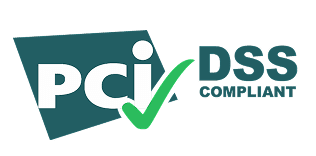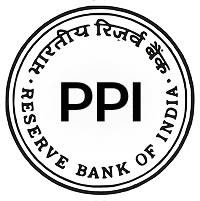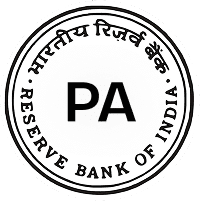Introduction
Have you ever experienced a situation where a brand made you feel that they were talking to you only, almost as if they had an idea of what you wanted? It is not a coincidence; it is market segmentation doing its magic. In this modern and competitive world of business, getting audience insight has turned from an ‘extra’ to a ‘necessity’.
Market segmentation allows companies to divide a big market into smaller, concentrated groups of people who have the same needs, lifestyles, or interests. In the end, companies can create their marketing messages that are very close to the audience, and thus, build stronger relationships and achieve higher profits.
Every business—whether new or well-established—should understand that segmentation is crucial for identifying the right customers, making better marketing decisions, and driving sustainable growth.
What is Market Segmentation?
Market Segmentation is a key concept in marketing that refers to the process of splitting a large market into smaller groups based on certain criteria such as needs, wants, or purchase patterns. The result of this step is that companies can carry out the marketing of their products and services more precisely and accurately, targeting the different segments of customers with those specific requirements only. In the present-day’s changed business world, it is very important to know that not every customer is alike to be successful. Every consumer group has its own specific likes and dislikes, habits of expenditure, reasons for buying, and expectations that indirectly govern their purchasing decisions. When segmentation is applied, such differences are spotted, and companies get to work with the right audience and reap more impressive results with their campaigns by establishing communication strategies that are not only appealing but also quite effective. Essentially, market segmentation boils down to a more customer-centric method of approaching, where marketing signals come across as more personal and related rather than simply as corporate. This helps the businesses to increase customer satisfaction, boost engagement, and maximize returns on marketing investments.
The definition of market segmentation becomes clear when illustrated through a strategic process. The process involves studying the customers and segmenting them into various categories. The process then continues with the development of products, services, and marketing strategies that directly match the particular needs of the targeted segment. This tactic not only enhances marketing efficiency but also ensures branding loyalty and eventually leads to the growth of a company that can compete in the market.
Importance of Market Segmentation
Every business that wants to enhance its customer relations and make the most of its resources has to realize the importance of market segmentation.
Improves Customer Understanding
Understanding the customer is one of the biggest benefits of market segmentation. Companies can associate various reasons that lead to consumers making their choice, thus by scrutinizing data such as customers’ likes and dislikes, buying habits, and lifestyle patterns. This insight helps the companies to tailor their offering as per customers’ expectations. For example, if one segment is identified as a price-conscious segment while quality is the main aspect for another, then the business can offer products to both, which will lead to better resource utilization.
Enhances Marketing Efficiency
The success of an efficient marketing campaign is not just in the number but rather in getting the right people to notice. The audience that is the right fit for the company will be the most likely ones to respond affirmatively to the marketing message. Thus, the process of market segmentation makes it possible to distribute the marketing funds among the most attractive groups. This will lead the companies to create the right messages that will be appealing to the targeted groups, and it also prevents wasted spend on groups that are unlikely to convert.g. The whole time, effort, and budget put into the defined segments will allow the business to accomplish its objectives quickly and with fewer resources. Marketing teams, on the other hand, perceive segmentation as a complication in their planning, but at the same time, they get higher engagement rates and better ROI (return on investment).
Increases Customer Satisfaction
Relevance is the major aspect contributing to customer satisfaction in the first place—consumers prefer to connect to the brands that understand their requirements better and can meet them. Grouping customers gives brands the chance to communicate, sell, and offer personalized experiences that are just right for the individual customer group.
Competitive Advantage
In the battle of a crowded market, differentiation is the most important thing. The segmentation of marketing will enable businesses to provide more personalized and relevant experiences, thus winning the battle against rivals. The company will be able to come up with a USP (unique selling proposition) based on the specific needs and status of the segments. Just like EnKash, with its customized financial and spend management solutions, can serve the different types of businesses—startups, SMEs, and enterprises—with their unique financial management needs. The customer-focused strategy not only creates customer loyalty but also enlarges the market share.
Supports Data-Driven Decisions
Moreover, segmentation brings about the major advantage of data-driven decision-making. If companies prefer to consider their customers in terms of groups, they will have to follow and evaluate each group’s corresponding performance metrics. This will be very useful as a basis for making decisions related to, say, pricing, promotions, and product development. For example, if it appears that a certain segment is much more responsive to digital campaigns than to offline ones, the company can then organize its marketing expenditure in such a manner that it predominantly favors digital channels.
Enables Tailored Financial and Business Solutions
In addition, market segmentation for EnKash users can improve the financial part of the decision-making process. Utilizing the segmentation knowledge, companies can come up with different kinds of financial solutions for different client groups. For example, businesses can use EnKash’s smart spend management tools to separate and analyze their spending in marketing, sales, or other departments based on the segments of their customer base. Furthermore, segmentation can aid in marketing different types of clients through different reward programs, pricing tiers, or credit solutions, which will be both efficient and customer-friendly.
Benefits of Market Segmentation
The gains from the marketing segmentation are not limited to just bettering sales but also contributing to customer loyalty, and the overall brand identity and sustenance in the market for a longer span.
Personalized Marketing
Via segmentation, companies can devise creative marketing plans, specifically for each target group. The pertinent and customized content leads to stronger connections and better reply rates as well as higher engagement. Brands that directly address their audience’s needs at specific ‘sweet spots are the ones that gradually form connections with the customers, continuing this cycle of fostering and eventually gaining customer loyalty and long-lasting relationships.
Higher Conversion Rates
Increased conversion rates are often the result of segmentation campaigns since the marketing messages are more relevant and thus highly focused. By knowing each group’s wants, companies can design their offers and calls-to-action in such a way that their message is received clearly and thus the communication is more effective. This precision generates better lead generation, more robust sales funnels, and increased profitability.
Efficient Resource Allocation
Through market segmentation, companies are securing the best areas for their time and money. They can avoid mass campaigns with uncertain outcomes; rather, they will be able to concentrate on those segments that have the highest value and are most likely to yield a return. This type of efficiency is very important for small and medium-sized companies that have restricted marketing budgets.
Customer Retention
The personalized experiences do not only bring customers in— they also keep them. If the businesses continuously give the customers the value that corresponds to the customer’s expectations, it will create trust and satisfaction. This gradually makes the customer more loyal and reduces the rate of attrition. Repeat customers not only bring more profit but also become brand advocates, thus indirectly promoting the business.
Improved Communication
In marketing, good communication is the foundation of all success. Through knowing each segment’s preferred language, tone, and channels, businesses can build more powerful messages. This ensures no marketing effort is wasted, and every customer feels understood and valued.
Market Segmentation Process
1. Identify Your Market
The first step in the process of market segmentation is to give a detailed description of the entire market for your product or service. The knowledge of market size reveals potential customers and their requirements that your business can satisfy. This understanding will determine further segmentation and targeting. For this purpose, customer data is indispensable. Customer data could consist of age, sex, place of residence, and salary, as well as hobbies and grievances. To get a complete picture of the characteristics and buying habits of their customers, various companies may turn to analyzing tools, conducting surveys, and digging into customer insights.
2. Develop Segmentation Criteria
If adequate information has been gathered, the next procedure is setting up segmentation criteria. Businesses have an option of categorizing customers based on different attributes like demographics, psychographics, behavior, or even location. The intention is to come up with groups that are alike in certain aspects and thus will probably react in the same way to marketing efforts.
3. Evaluate and Select Segments
Segments always have different values attached to them. Therefore, firms should assess the worth of every group in terms of profitability, size, accessibility, and compatibility with business goals. The selection of the appropriate segments will be very good because it will result in the effective and efficient usage of marketing resources.
4. Design Targeted Strategies
The segmentation decision should lead the company to design a campaign that would meet the needs and wants of each segment. This could mean, for instance, that they would communicate differently with each group, offer different promotions, or use the most effective media for reaching their specific audience.
5. Monitor and Optimize
To sum up, the monitoring of the campaign’s performance should be carried out regularly, accompanied by data analysis informing the adjustments to be made. The practice of continuous optimization will ultimately bring about better results.
Types of Market Segmentation
The familiarity with the different types of market segmentation enables the companies to have a clear view of their target audiences and further develop campaigns that would attract the specific groups of consumers.
1. Demographic Segmentation
Demographic segmentation is one of the most widely used and simplest methods. It partitions the market according to measurable traits like age, sex, income, education level, job category, and house size. By way of example, a luxury brand might aim at affluent professionals, while a discount brand might target middle-income families. This technique allows firm to align their products as well as marketing communications with particular demographic requirements.
2. Geographic Segmentation
Geographic segmentation depends on the location, alongside its features such as area size, environment, and population density. Some places might have different product availability, depending on their tastes, cultural impacts, or even other reasons. For instance, the fashion industry frequently changes its stock based on the local weather or prevailing trends.
3. Psychographic Segmentation
Psychographic segmentation is a more advanced marketing method because it not only takes consumers’ personality traits, interests, lifestyle choices, opinions, and values into consideration but also helps companies get closer to the consumers emotionally. For instance, environmentally friendly buyers might prefer to be served by such vendors that have sustainability in sourcing their raw materials, while the adventurous ones could go for branding that conveys excitement and immersion.
4. Behavioral Segmentation
This segmentation strategy is based on consumer behavior such as frequency of purchase, loyalty to brand, use of product, or patterns of making decisions. Based on the analysis of consumer behavior, companies can easily spot the customers who are loyal to them, the occasional buyers, and the new customers, and then devise marketing strategies that are appropriate for each of the customers’ buying journeys.
5. Technographic Segmentation
Technographic segmentation is the division of people according to the digital technologies employed and the activities performed online. This is an essential factor in the current world where everything is done digitally, since consumers’ likes for hardware, software, or online media are major factors in their buying decisions.
Target Marketing
Target marketing is the practice of concentrating marketing efforts on a narrowly defined group of consumers picked through the segmenting of the market process. Rather than showcasing products or services to a wide-ranging audience, businesses apply target marketing to focus on particular customer segments that have like characteristics, needs, or loves. The brands can then develop personalized messages, plan appropriate activities, and deliver such products that are more appealing to the audience they want.
By way of example, a fintech firm like EnKash may prefer to go after the startups and SMEs needing sophisticated expense control, spend oversight, and payment automation, instead of taking on all business sectors at the same time. By identifying the specific problems and aspirations of this group, EnKash can demonstrate a relevant, solution-focused valuer.
This kind of marketing precision not only raises the efficiency of marketing but also strengthens the bonds with customers. In the end, target marketing is a strategy that allows companies to spread their resources smartly, to get a higher number of sales, and to win the loyalty of the brand, as customers feel that they are being understood and are appreciated through the personalized marketing experiences.
Conclusion
To conclude, market segmentation is the most important strategy for companies that want to grow strategically and be successful in the long run. Companies that break down the broad market into smaller markets that are well defined can acquire the right knowledge of customer needs, products, and services, and experience that customers value. The use of a structured market segmentation process not only enhances the marketing department’s operations but also increases sales conversions and customer loyalty. When segmentation is joined with focused target marketing, it becomes a strong tool for business growth that helps the company make smarter decisions in both marketing and finance. This is all the more so as it assists organizations in reaching out to the intended audience, making the best use of resources, and enjoying business success that is sustainable in the long run.
FAQs
1. What is market segmentation in simple words?
Market segmentation is dividing a market into small groups of customers who have similar characteristics or needs.
2. Why is market segmentation important in business?
It assists firms in acquiring a better understanding of customers, influences the allocation of marketing budgets, and leads to a rise in conversions.
3. Can market segmentation increase customer loyalty?
Yes, customers feel appreciated when personalized products, services, and communication are offered to them, and this results in loyalty, which, in turn, encourages the customers to come back.
4. What are the main types of market segmentation?
The most common types of market segmentation are demography, geography, psychology, buying behavior, and technology features.
5. Can small businesses benefit from market segmentation?
Yes! Startups and small to medium-sized enterprises can also apply segmentation to narrow down their marketing efforts, get the right customers, and nurture relationships without draining their budget on extensive marketing campaigns.








